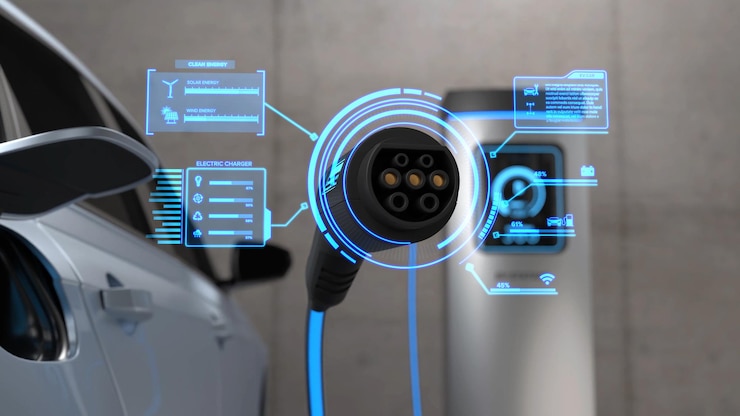In recent years, the rise of Electric Vehicles (EVs) has been nothing short of revolutionary. These vehicles are reshaping the future of transportation, offering a cleaner and more sustainable alternative to traditional internal combustion engine vehicles. But what exactly sets EVs apart? To truly understand this, we must delve into how EVs are built differently. From their unique architecture to the cutting-edge technology that powers them, EVs are a testament to innovation and progress.

The Unique Architecture of Electric Vehicles
At the core of an EV’s distinctiveness is its architecture. Unlike conventional vehicles, EVs are designed around their electric powertrains, which include components such as the electric motor, battery pack, and power electronics. This unique architecture allows for greater flexibility in design, leading to innovative interior layouts and improved aerodynamics.
Electric Motors: The Heart of EVs
The electric motor is the heart of an EV. It is responsible for converting electrical energy from the battery into mechanical energy, propelling the vehicle forward. Unlike internal combustion engines, electric motors provide instant torque, resulting in smooth and rapid acceleration. This characteristic not only enhances performance but also contributes to a more enjoyable driving experience.
Battery Technology: Powering the Future
The battery pack is another fundamental component that distinguishes EVs. It stores the energy required to power the electric motor and is typically made up of hundreds or even thousands of individual cells. Advancements in battery technology have led to increased energy density, allowing EVs to travel longer distances on a single charge. For more information on battery advancements, you can explore external resources.
Innovative Manufacturing Processes
The shift towards electrification has prompted automakers to adopt innovative manufacturing processes. These processes are designed to optimize the efficiency and sustainability of EV production.
Lightweight Materials
To maximize efficiency, EV manufacturers often use lightweight materials such as aluminum and carbon fiber in their construction. These materials reduce the overall weight of the vehicle, improving both range and performance. The use of lightweight materials is just one example of the innovative approaches being taken in modern EV manufacturing.
Advanced Robotics and Automation
Manufacturing EVs involves advanced robotics and automation to ensure precision and efficiency. These technologies enable the production of complex components with high accuracy, contributing to the overall quality and reliability of EVs.
Distinctive Design Elements
EVs are not only built differently but they also look different. Their design elements are influenced by their unique architecture and the absence of traditional powertrain components.
Streamlined Exteriors
The absence of a bulky engine allows for more streamlined and aerodynamic exteriors. This design not only enhances the aesthetic appeal of EVs but also improves their efficiency by reducing air resistance.
Spacious Interiors
With no need for a driveshaft tunnel or transmission hump, EVs offer more spacious interiors. This allows for innovative seating arrangements and increased passenger comfort. For an in-depth comparison of EV designs, check out the network review.
Sustainability and Environmental Impact
One of the primary motivations behind the shift to EVs is their potential to reduce environmental impact. EVs produce zero tailpipe emissions, contributing to cleaner air quality and a reduction in greenhouse gas emissions.
Renewable Energy Integration
EVs are often powered by renewable energy sources such as solar and wind, further enhancing their sustainability. This integration of renewable energy aligns with global efforts to transition towards a more sustainable energy future.
Recycling and Reusing Materials
Automakers are increasingly focusing on recycling and reusing materials in the production of EVs. This approach not only conserves resources but also reduces waste, contributing to a more sustainable manufacturing process.
Challenges and Future Prospects
While the benefits of EVs are numerous, there are challenges that must be addressed to ensure their widespread adoption.
Infrastructure Development
One of the key challenges is the development of adequate charging infrastructure. To support the growing number of EVs on the road, investments in public charging networks are essential. Learn more about this in our charging guide.
Technological Advancements
Continued advancements in battery technology and energy management systems will play a crucial role in overcoming range limitations and improving overall efficiency.
Conclusion
In conclusion, how EVs are built differently is a testament to the innovation and progress in the automotive industry. From their unique architecture and advanced manufacturing processes to their distinctive design elements and sustainability efforts, EVs represent a significant leap forward in transportation technology. As we look towards a more sustainable future, the continued development and adoption of EVs will play a pivotal role in shaping the world we live in.

FAQ
Q1: What makes EVs more environmentally friendly than traditional cars?
A1: EVs produce zero tailpipe emissions, reducing air pollution and greenhouse gas emissions. They can also be powered by renewable energy sources, further enhancing their environmental benefits.
Q2: How do EVs achieve better performance compared to conventional vehicles?
A2: EVs have electric motors that provide instant torque, resulting in smooth and rapid acceleration. This characteristic enhances performance and contributes to a more enjoyable driving experience.
Q3: What are the future prospects for EV technology?
A3: The future of EV technology looks promising, with ongoing advancements in battery technology and energy management systems. These developments are expected to improve range and efficiency, making EVs even more appealing to consumers.





